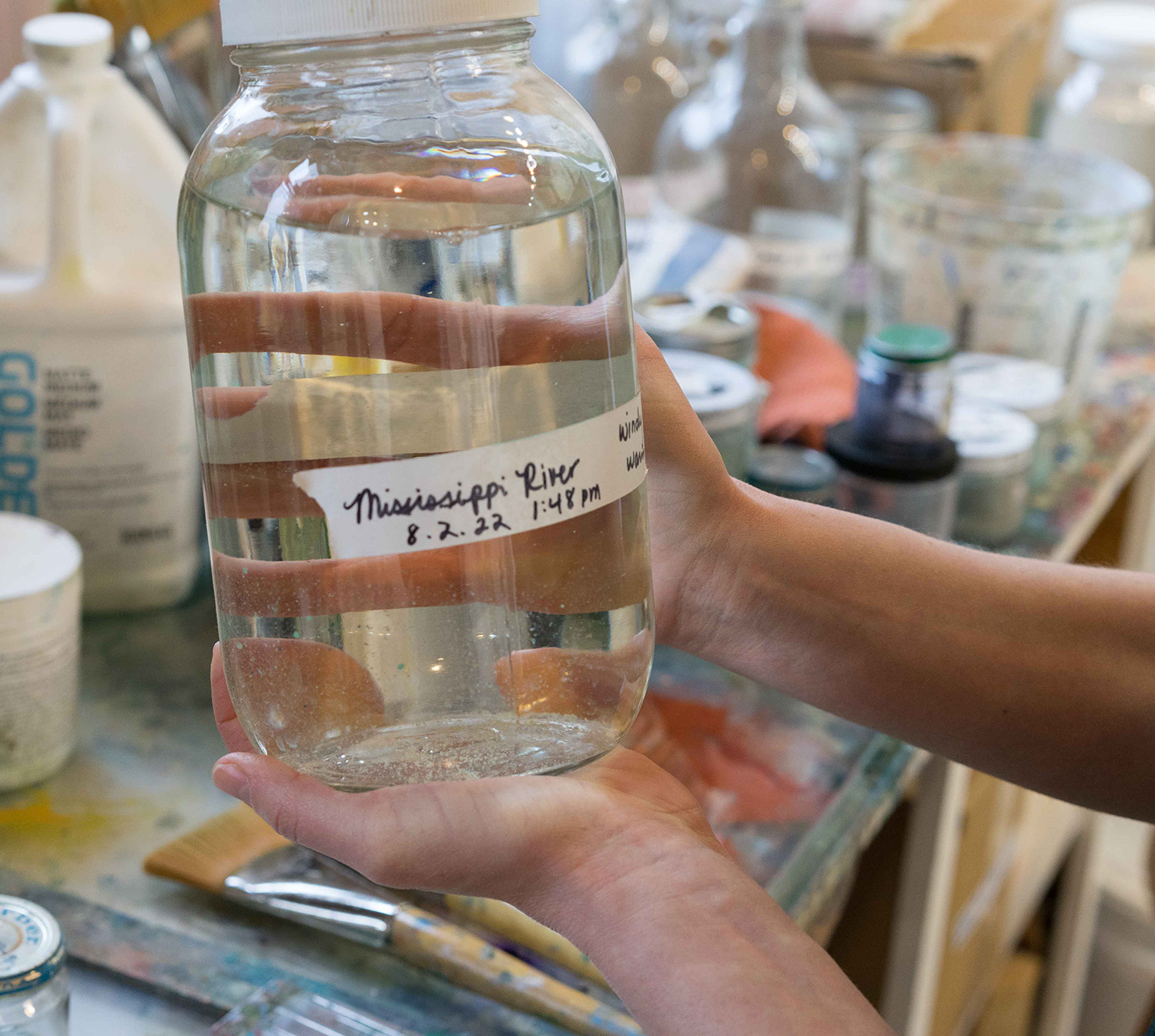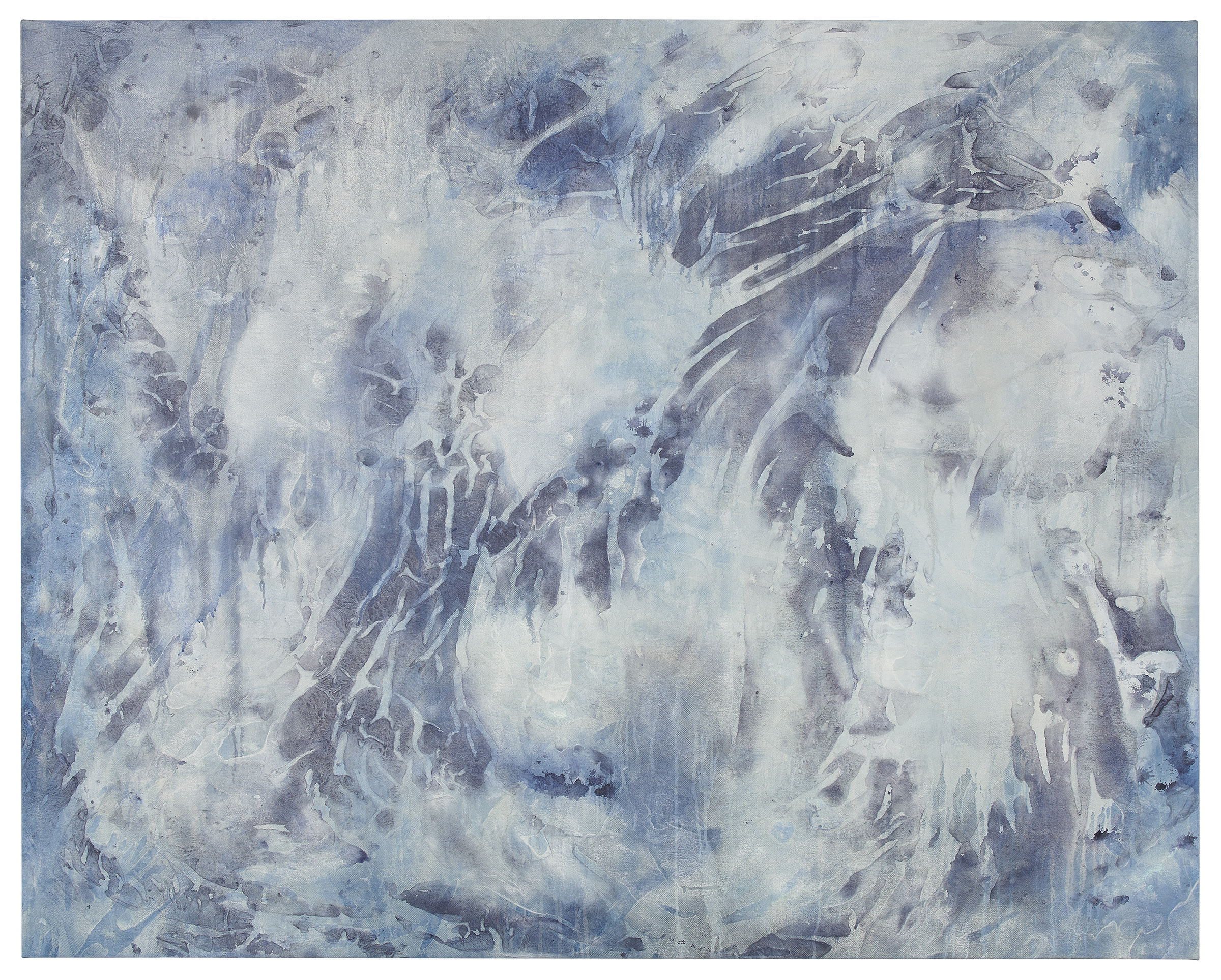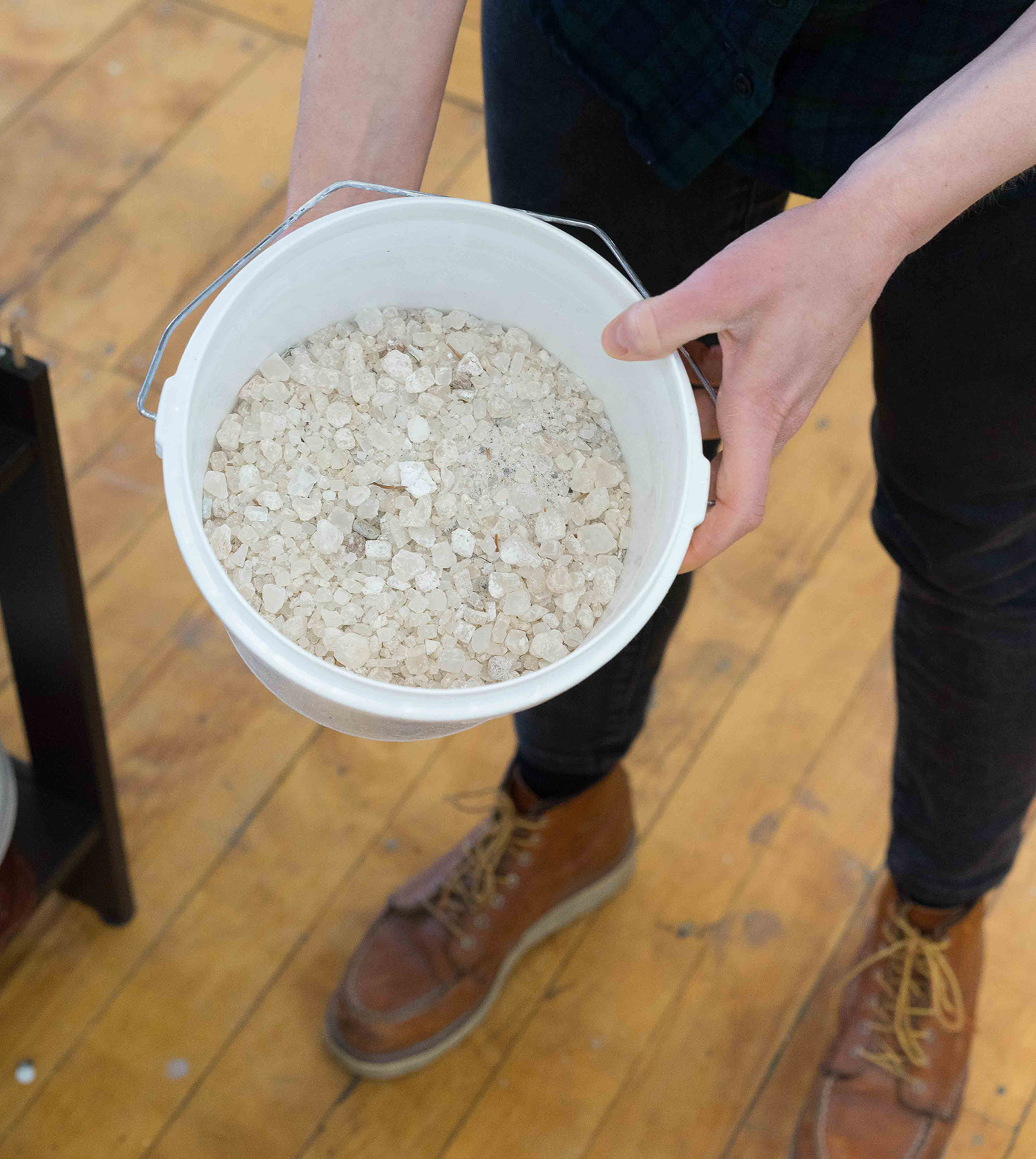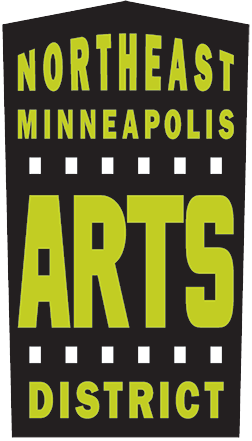If art is a form of attention, Annie Hejny is paying attention to water. “My work began with the way being around water made me feel and how it has been such a presence in my life.” During an assignment as a student in the Women’s Art Institute program at St. Catherine’s University in St. Paul, Hejny had the idea to paint with water taken directly from the Mississippi River. So began an ongoing practice of creating paintings with sediment and water collected from the bodies of water that inspire them.

Hejny’s collection process is as much about being present at the shoreline as it is about the materials she collects. “I gather my materials as respectfully as possible, acknowledging the land, acknowledging the water.” She takes only the amount of sediment and water she needs for each project. Back in her studio, she gradually pours layers of sediment, paint, and gathered water across the canvas. The resolved paintings are abstract, evoking the feeling of light, movement, and color each body of water holds for Hejny. The whole process seems less focused on controlling an outcome than it is on discovering and responding to how the materials move and settle.
Discovering this process was “a kind of awakening of both my artistic voice and an awareness of a deep call to find a way to use that voice to bring attention to the earth.” When people see her paintings, it often starts a conversation about their own love for water; from there, Hejny said she finds opportunities to encourage people’s attention and advocacy for the bodies of water they care about. Hejny leads workshops where participants explore painting and abstracting their observations of nature. But drawing upon Hejny’s training as a certified nature and forest therapy guide, a core component of these workshops is focused on simply being in nature: “being outside in a way that’s a little slower, paying attention to small things and simple moments.”
Relying on a natural water source for each project has put Hejny’s work in tune with changes in the weather and climate. A significant drought last summer prompted Hejny to change direction on a project involving the Minnehaha Creek; the dry riverbed gave her rare access to its sediment, but the drought also directed her toward a water source she’d previously overlooked: snow.
“Winter’s water,” she realized, was right outside her studio windows, which overlooks a section of Casket Arts’s sprawling rooftops. This past winter, Minnesota’s 3rd snowiest on record, she began a new iteration of her water paintings based on winter. The paintings are large, evoking the feeling of being out in a blizzard or looking through a frost-coated window. “We’re surrounded by water in the winter. We need to celebrate it more!”

An awareness of winter’s water is Hejny’s chosen focus as she trains to be a Minnesota Water Steward with the Mississippi Watershed Management Organization. The program’s “Art for Water” track is grounded in water science and oriented towards outreach to community, requiring participants to design and implement a public art project that inspires behavior change related to water health. Hejny is using the opportunity to draw attention to the impact of winter road salt melting down our storm drains and into our watershed each year. “I swept up 4 gallons of salt from maybe 12 parking spaces in a single parking lot.” She’ll observe the effect of the salt in water in a series of paintings, and she’ll use their release at Fall Open Studios this year as an opportunity to engage visitors about watershed health; she may hand out grit samples, an alternative to salt.

Hejny is no stranger to the impediments to transitioning away from environmentally tricky materials. Acrylic is a water-based medium, making her water process a relatively seamless integration; but she has had to reconcile with the fact that acrylic is a plastic. “There’s always been a tension of using a material that’s potentially harmful to the environment.” In addition to minimizing her studio waste, she had to come to an understanding that acrylic and water were the materials with which she had the skill to tell the story of water. “Ideally, I would like to evolve that in some way—but it’s not the time yet.” The heartbreaking irony of it, she said, is that microplastics are already in every waterbody from which she collects, from the Mississippi River to Lake Superior.
Lake Superior is where Hejny’s attention will soon be centered. As a 2023 recipient of the Kolman & Reeb Gallery’s Project Space Grant, Hejny will embark on a three-week solo trip circumnavigating Lake Superior, collecting water and sediment from specific stops along the route. “I’m ready to become more courageously expressive, pushing beyond the current limits of my style,” she shared. “Never before have I had the opportunity to spend this much time solely focused on one place, one waterbody. I believe it will be transformative for me.”
Perhaps Minnesotans know something of the power of standing on the shoreline of a body of water in awe or affection or longing. In Hejny’s view, leaning into that embodied experience of presence and attention in nature can be transformative for anyone. The invitation is there, the next time you go outside, to notice the water around you, tune into the small details, and pay attention to the earth.
Article by Katherine Boyce
